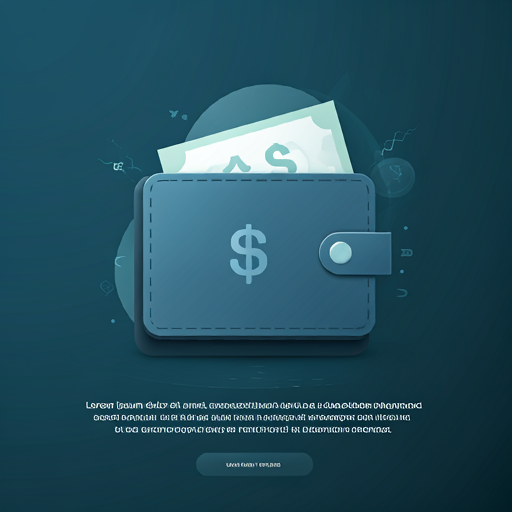The Rise of Digital Wallets: Revolutionizing Payments
Definition and Functionality
Digital wallets are software applications that store payment information securely. They facilitate transactions by allowing users to make purchases electronically. This technology enhances efficiency in financial exchanges. It simplifies the payment process significantly. Users put up link their bank accounts or credit cards. This integration streamlines the transaction experience. Digital wallets also employ encryption for security. Security is pwramount in financial transactions . They often support multiple currencies, including cryptocurrencies. This versatility is increasingly important in today’s market.
Historical Context and Evolution
The concept of digital wallets emerged in the late 1990s, coinciding with the rise of e-commerce. This period marked a significant shift in consumer behavior. As online transactions became more prevalent, the need for secure payment methods grew. He recognized the potential for convenience and efficiency. Over the years, advancements in technology, such as mobile devices and contactless payments, further propelled their adoption. This evolution reflects changing consumer preferences. Today, digital wallets integrate various financial services, enhancing user experience. This integration is crucial for modern finance.
Types of Digital Wallets
Hot Wallets vs. Cold Wallets
Hot wallets are connected to the internet, allowing for quick access to funds. They are ideal for frequent transactions. However, this connectivity increases vulnerability to cyber threats. Security is a major concern. In contrast, cold wallets store assets offline, providing enhanced security. They are suitable for long-term storage.
Comparison:
Understanding these differences is essential. He should choose based on his needs.
Mobile Wallets and Web Wallets
Mobile wallets are applications installed on smartphones, enabling users to make transactions on the go. They offer convenience and quick access to funds. He can easily pay bills or transfer money. Web wallets, on the other hand, are accessed through web browsers. They provide a platform for managing digital assets from any device.
Comparison:
Understanding these options is crucial. He should assess his usage patterns.
Benefits of Using Digital Wallets
Enhanced Security Features
Here are 10 trending article titles for a financial website based on the latest news and analysis: No input data
Convenience and Accessibility
Digital wallets offer unparalleled convenience for transactions. He can make payments instantly from his device. This immediacy enhances the overall user experience. Additionally, they provide easy access to funds anytime, anywhere. He appreciates the flexibility this offers. Many digital wallets support multiple currencies, simplifying international transactions. This feature is increasingly valuable in a global economy. Furthermore, integration with various services streamlines financial management. He finds this integration beneficial for budgeting.
Challenges and Risks
Security Vulnerabilities
Digital wallets face several security vulnerabilities that can jeopardize user assets. He must be aware of potential threats. Common risks include phishing attacks, where malicious actors attempt to steal credentials. This tactic is increasingly sophisticated. Additionally, malware can compromise wallet security, leading to unauthorized access. He should regularly update security software.
Common Vulnerabilities:
Understanding these risks is essential. He should prioritize security measures.
Regulatory and Compliance Issues
Regulatory and compliance issues pose significant challenges for digital wallets. He must navigate complex legal frameworks. Different jurisdictions have varying regulations regarding cryptocurrency transactions. This inconsistency can create confusion for users. Additionally, compliance with anti-money laundering (AML) and know your customer (KYC) requirements is essential. He should ensure proper documentation is maintained.
Key Compliance Areas:
Understanding these regulations is crucial. He should stay informed about changes.
The Role of Blockchain Technology
How Blockchain Enhances Wallet Security
Blockchain technology significantly enhances wallet security through decentralization. He benefits from reduced risk of centralized attacks. Each transaction is recorded on a public ledger, ensuring transparency. This transparency fosters trust among users. Additionally, cryptographic techniques secure data, making unauthorized access difficult. He should appreciate the importance of encryption.
Key Security Features:
Understanding these features is essential. He should prioritize secure wallet options.
Smart Contracts and Payment Automation
Smart contracts are self-executing agreements with terms directly written into code. They automate payment processes, reducing the need for intermediaries. He can benefit from increased efficiency and lower transaction costs. Additionally, these contracts enhance trust, as they execute automatically when conditions are met. This reliability is crucial in financial transactions.
Key Advantages:
Understanding smart contracts is essential. He should consider their applications in finance.
The Future of Digital Wallets
Trends in Adoption and Usage
The adoption of digital wallets continues to move up globally, driven by technological advancements and changing consumer prererences. He observes a growing trend towards contactless payments. Additionally, integration with loyalty programs enhances user engagement. This integration is increasingly important for businesses.
Emerging Trends:
Understanding these trends is vital. He should stay informed about developments.
Potential Innovations on the Horizon
Innovations in digital wallets are rapidly emerging, focusing on enhanced user experience and security. He anticipates the integration of biometric authentication methods. This technology will improve security significantly. Additionally, the use of artificial intelligence for personalized financial advice is on the rise. He finds this development promising for users.
Future Innovations:
Staying updated is essential. He should explore these advancements.
